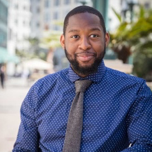Reentry October 2, 2024
At the heart of every policy change, every system overhaul, and every reform initiative are the lives of real people. There are the individuals who drive the systemic change forward and the individuals whose lives are fundamentally altered by its implementation.
Criminal justice reform is no different. As part of its national work to reduce jail populations across America since 2015, the John D. and Catherine T. MacArthur Foundation’s Safety and Justice Challenge (SJC) has affected people’s lives in real ways. By reducing reliance on jails, SJC makes it easier for people to be an active part of their families’ lives, work and go to school, all of which contribute to building safer communities and a more just society.
One area where the criminal justice system has lagged is in the health outcomes of incarcerated people. As part of broader efforts to address health system inequities, there is new focus on supporting the health needs of people who are transitioning from incarceration back into the community. Until now, the health care system for people who are incarcerated has been fragmented and inadequate. Many individuals struggled with the abrupt loss of Medicaid benefits during incarceration, leading to gaps in critical medical and behavioral health care at release from jail. These gaps often result in worsening health conditions, increased risk of death upon release (especially from overdose), difficulties securing employment and housing, and a higher risk of re-incarceration. The absence of coordinated care and support systems perpetuated cycles of instability and repeated contact with the criminal justice system.
Increasingly, states are leading efforts to use Medicaid to build continuity of care at release, and California is the first state in the nation to do so. California made history in January 2023 as the first state to receive approval from the federal Centers for Medicare and Medicaid Services (CMS) for a Medicaid Reentry Section 1115 Demonstration Opportunity. Ten additional states have recently been approved by CMS to implement their own, similar waivers and thirteen states have also proposed waivers. California’s efforts, the California Advancing and Innovating Medi-Cal (CalAIM) Justice-Involved Initiative, aim to ensure that people transitioning from incarceration back into the community receive continuous medical and behavioral health care. As of October 1, 2024, the first three California counties have gone live to provide prerelease services and behavioral health links. This marks a significant leap in addressing the complex health needs of individuals reentering the community, fostering unprecedented collaboration between criminal justice and healthcare systems.
But what does this change mean for real people, both individuals with lived criminal justice experience and the practitioners dedicated to their care?
“When medical benefits are hooked up, it can save lives,” said Joe Calderon, Manager of Recruiting and Training with reentry program Urban Alchemy, and a person with lived experience of incarceration, in San Francisco. “We’re talking about people who historically aren’t trustful of systems and who haven’t had access to medical [services]. When we have a program using community health workers, we’re able to bridge the biases that prevent people getting access to care.”
For individuals leaving incarceration, this change can be considerably life-altering. The CalAIM Justice Involved initiative intends to transform the reentry experience, moving from a fragmented and often inadequate system to one that prioritizes continuous care and support. Historically, individuals faced numerous challenges upon reentry. “We need to make the correct connections with the system. The CalAIM benefit being there is important, but we also need organizations to help build relationships so that people can show up for care,” Joe noted.
Under the new waiver, the landscape will change. Medicaid benefits will now become active prior to a person’s release, improving sustained access to necessary medications and medical supplies. Individuals will be provided with transitional care plans, including pre-release services and connections to community-based providers. The availability of support systems, such as case managers and continuity of access to health and behavioral health care, and housing assistance, aids individuals in rebuilding their lives. By enhancing the continuity of care during the critical transition back to the community, this initiative will not only improve health outcomes but also offer hope for breaking the cycle of incarceration.
“When it comes to medical benefits, the honey might be there to be accessed, but we need to help people get into the honeypot,” Joe acknowledged. “There are a lot of competing priorities around reentry and medical matters, and medical often gets forgotten.”
Others are more skeptical about the program and want to make sure that those implementing it avoid perpetuating inequities and acknowledge the system’s history of harm and broken trust.
“As a formerly incarcerated person, I know what it’s like to transition back into the community,” said Aminah Elster, CEO of Proximate Strategies Consulting. “For some people, I think CalAIM might be beneficial, but it’s only a small subset of those incarcerated. It only covers the last 90 days of incarceration.”
Earl Simms, CEO of Restorative Community Solutions and a person with lived carceral experience, has been involved in some of the discussions about CalAIM over recent months. He has concerns about the system’s ability to build the trust needed to successfully implement these changes. “I think the continuity of care idea is amazing,” he said. “But we need to be careful not to be too excited about this program because we need to have trusted, credible messengers involved in managing the delivery.”
It’s crucial to remember that at its core, this initiative is about people – particularly the people who will experience these transformative changes. The advisory insight from people with lived expertise can make a tangible impact on the efficacy of the innovations practitioners are making. However, to do this, practitioners must make a dedicated effort to consistently seek, incorporate, and uplift these voices at various stages of the implementation process. Earl’s concerns about credible messengers are important to take into consideration. “I’ve not seen the brainstorming around the new program include more voices like mine, I’ve not seen people with lived experience included in thinking about where the gaps might be. It would be good to have an oversight committee including people with lived experience to help us course correct when things go awry.”
The implementation of the Medicaid 1115 reentry waiver represents a shift in how we approach health care for justice-involved individuals that recognizes health care as a crucial component of successful reentry. It hinges not just on the policy changes, but on the human connections and systems built to support these changes. Practitioners across criminal justice and healthcare fields, including county health, jail operations, correctional health, and managed care plans, are forging new relationships and developing communication pathways that were previously minimal or non-existent. This collaboration between justice and healthcare practitioners, along with the involvement of individuals with lived expertise, also helps to create a system that is informed by the people they aim to serve. Ultimately, these bridges are building a framework that prioritizes human connection and continuity of care.
For more information on the Medicaid Reentry Section 1115 Demonstration Opportunity, the CalAIM JI initiative and its implementation, we encourage you to read the full papers released by Justice System Partners (JSP) and The Health and Reentry Project (HARP). Together, we can work towards a more just, equitable, and human centered approach to reentry that helps transform lives and communities.
Link to the paper: Implementing the Medicaid Reentry Waiver in California.
–Special thanks to Joe Calderon, Manager of Recruiting and Training with Urban Alchemy, Aminah Elster, CEO of Proximate Strategies Consulting, and Earl Simms, CEO of Restorative Community Solutions.










